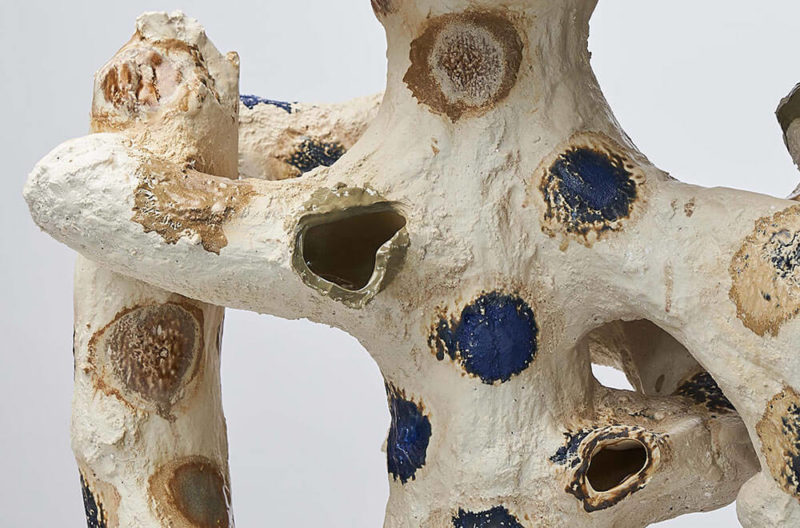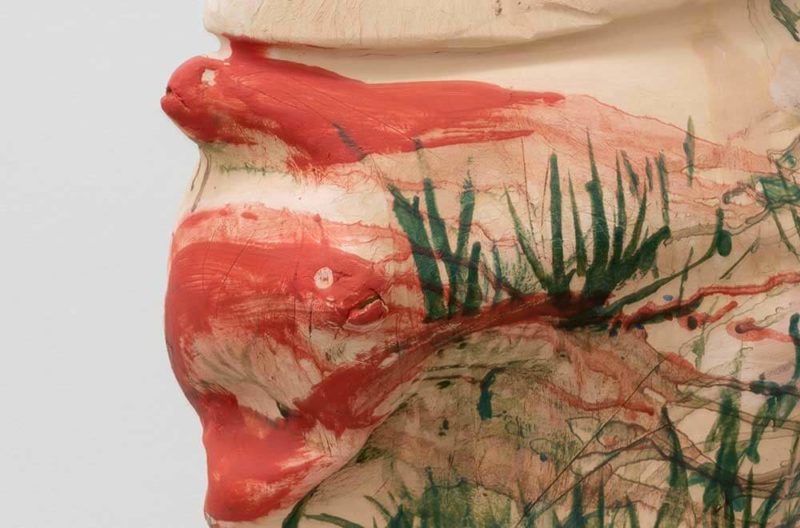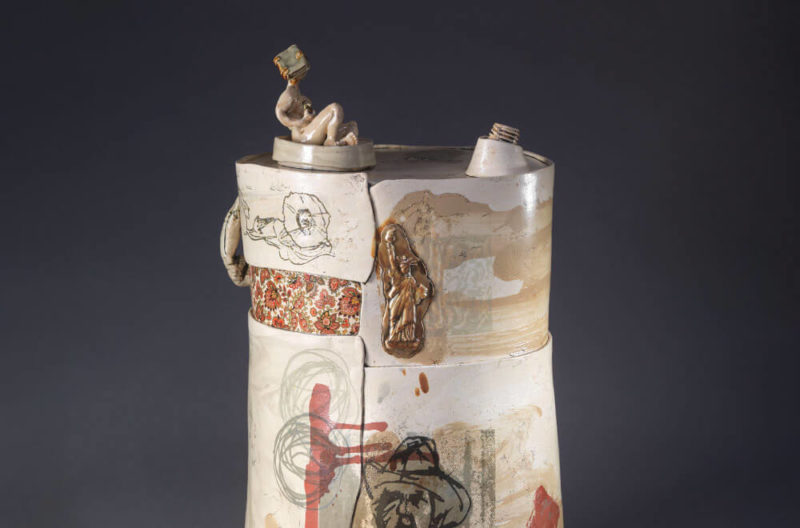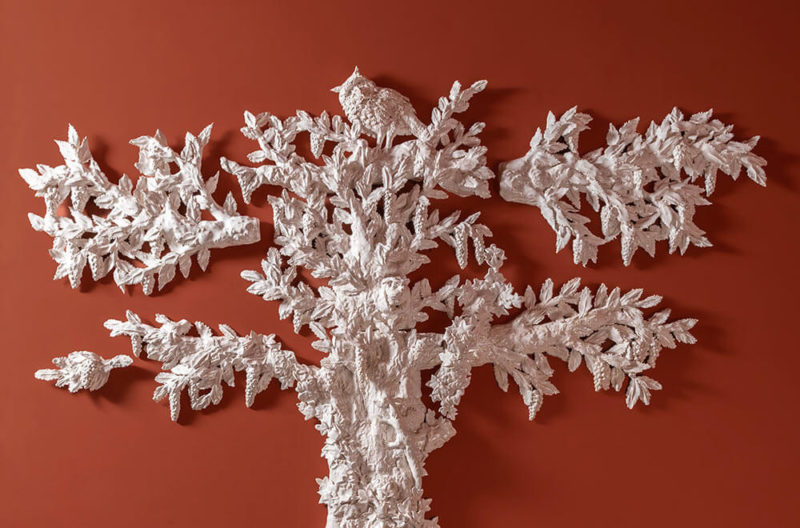‘Our Bodies, In Fragmented Gesture’, 2019
Zoë Paul
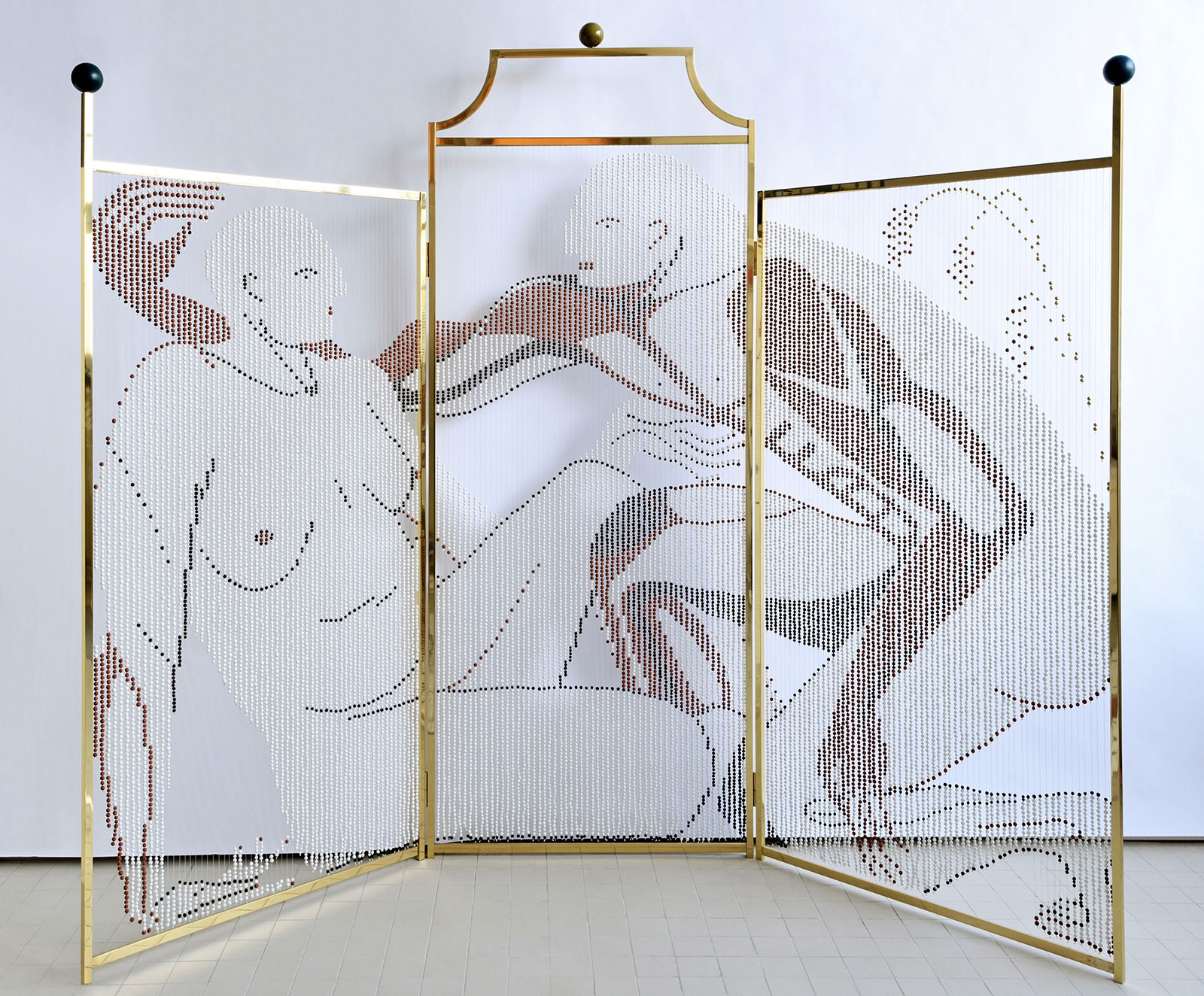
Zoe Paul, ‘Our Bodies, In Fragmented Gesture’, 2019
COURTESY: © Sèvres – Manufacture Musée nationaux / PHOTOGRAPH: Gérard Jonca
AS PART OF the exhibition ‘Human Conditions of Clay’, exploring the expressive human interaction with clay, curator Deborah Smith chose this remarkable screen by artist Zoë Paul. ‘Our Bodies, In Fragmented Gesture’ is an oversized hand-crafted tapestry made of individual tiny ceramic beads that have been fired at different temperatures, to create a range of earthy brown, white and dark blue hues. The beads are threaded onto steel wires to create a figurative scene, with a naked male and female figure. The two figures, created effectively from dots of colour, like pixels, are highly stylised, as in the paintings on Greek vases, but with an erotic charge and urgency to their postures that feels completely contemporary.
‘Our Bodies, In Fragmented Gesture’ was created during Paul’s six-month residency with the Manufacture de Sèvres in 2019. During her stay, she delved deeply into the archives of the institution, fascinated equally by the many artists who have worked with Sèvres – including Jean Arp, Alexander Calder and Louise Bourgeois – and by the long design history of this porcelain factory. She seized upon the idea of creating this screen with its Art Deco frame and highly stylised Greek scene for her residency project.
The screen has the paradoxical effect of offering, through its conventional function, to hide a pair of passionate lovers, and of bringing them simultaneously to vivid life in front of us. The drama of the scene is doubled and confused by the shadows thrown by the beads onto the wall behind, so nothing is stable. The narrative the screen depicts seems ageless and archetypal – yet the figures themselves are almost ghostly, teetering on the immaterial, as if the stories and characters conjured may at any moment slip from us, disintegrate and disappear from memory. This effect is compounded by the fact that the figures are shown only in profile – not looking at you – as if they do not exist in our world at all, but in a parallel world that is cut off from us.
Zoë Paul was brought up between the UK and the Greek island of Kythira by two South African artist parents. Barely attending formal school, some of her earliest memories are of using clay from the cliffs of the island to make things. In 2014, inspired by her jeweller mother, Paul conceived the idea of stringing ceramic beads together, using fishing wire, to make sculpture. “I was interested in the idea of using materials that cost nothing,” Paul explains. She also experimented with weaving modest tapestries onto decaying refrigerator grills.
In 2018, Paul presented a solo exhibition at Spike Island in Bristol, which was dominated by an eight-and-a-half-metre hanging created from beads hung on Japanese steel cable. The beads composed the scene from the Odyssey, when Odysseus’s intoxicated men lose their will to return home. The Japanese steel cable was necessary to hold the weight of ceramic beads, without sagging. Paul says, “Clay is living stone, that is what I love about it, but it is extremely heavy.” The steel cable keeps the beads in their exact position to create the image Paul has designed, “So it is about turning the heaviness into something that is light, like silk – a kind of illusion,” she says.
In normal circumstances, Paul’s work is profoundly collaborative. Students from the art school in her home city, Athens, help to create the beads. Community is built this way. In Bristol, one aspect of the exhibition was an invitation to visitors to join in rolling beads for future projects. At Sèvres, by contrast, Paul found herself working alone, an artist looked upon askance by the artisans around her, presented with the beads she needed but otherwise left to create her work alone. She says of this screen’s vividly human scene, “I think these figures were wanting company.”
‘Human Conditions of Clay’ at John Hansard Gallery, Southampton, runs until 7th May 2022.




